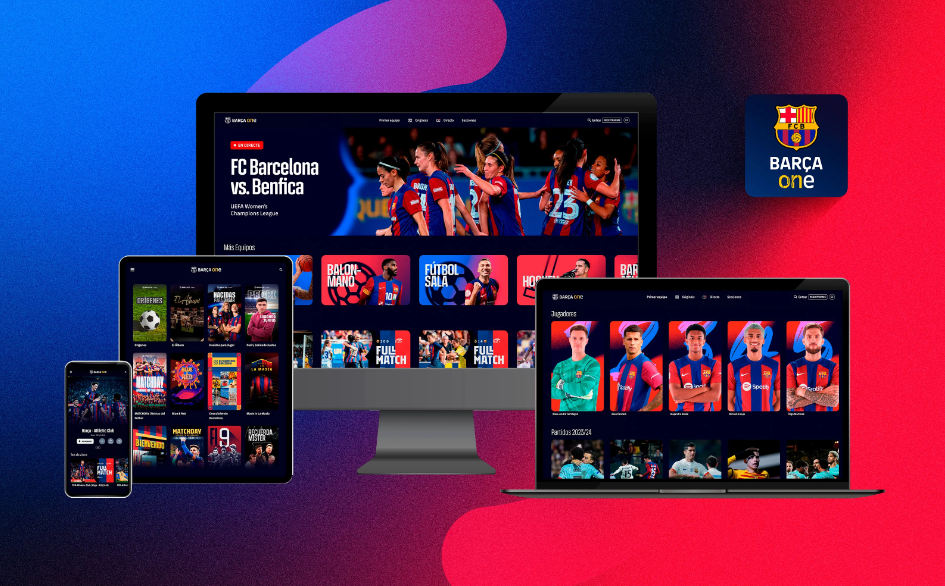 Simulmedia had been one of the companies at the forefront of the push to bring digital-style buying into the TV world. Last week the company announced TV+, an evolution of its platform which founder and CEO Dave Morgan describes as a culmination of the last 14 years worth of work.
Simulmedia had been one of the companies at the forefront of the push to bring digital-style buying into the TV world. Last week the company announced TV+, an evolution of its platform which founder and CEO Dave Morgan describes as a culmination of the last 14 years worth of work.
VideoWeek spoke with Dave Morgan to hear more about how the company has solved for deduplication of audiences across linear and CTV, how he thinks the current measurement battle in the US will shake out, and why he believes the WFA’s work on cross-media reach is vital.
What does the update to TV+ mean for Simulmedia?
The whole trajectory of Simulmedia has been to bring a digital approach to TV advertising. And from the beginning 14 years ago, we anticipated that at some point linear TV would be supplemented, complemented, and eventually replaced by Internet Protocol driven broadband TV. We expected that would mean that the industry would shift towards an audience based approach to buying.
We knew that to be able to do that you’d have to be able to find people, and to deduplicate those audiences within TV. That’s very hard to do when you’re working with tiny panel samples, so you’d have to build massive datasets to be able to deduplicate people across every channel, every programme, and every time – that’s necessary to be able to efficiently run audience-based campaigns across linear TV.
And then you would need to extend that audience-based identity graph into streaming.
So we’ve been building towards that, testing and working with every single kind of dataset available in the US market for 14 years, including set-top boxes, smart TVs, all those sorts of things. And we managed to solve issues around deduplication for audience-based buying on data-driven linear TV. That’s been the core business we’ve been running, and we’ve built different capabilities around automation, targeting, and outcome measurement on top of that.
The piece that was out there was that even though we supported CTV campaigns, we didn’t have them fully knitted in on a deduplicated basis. So what’s unique about TV+ which we’d not done before, and that no one is doing in this market, is delivering true cross-platform planning, activation, and measurement on a deduplicated basis. You push a button and your campaign activates, it goes to 130 linear publishers and hundreds of CTV publishers. Then we pull the data back to be able to deduplicate it.
Ad-supported streaming currently only represents five percent of ad-supported viewing on TV, because most streaming is on the paid services, but our belief is that it’s going to keep growing. And people can’t afford to keep buying in two different buckets.
Which datasets do you lean on to enable audience deduplication?
We use a couple of data sources. We get second-by-second viewing data from smart TVs and set top boxes, which shows us the direct viewing of well over 30 million people in the United States. And it’s a well distributed sample covering every postal code in the country.
We also use the full Nielsen panel at the respondent level to balance it, and we bring in US Census data and Experian data which gives us demographic characteristics. Then we bring in all the ad occurrences from three different sources.
That means we’re covering more than ten percent of all viewers, so we have a very accurate projection of what all 305 million people in the US who are two and older are watching at any time.
Then we start predicting that viewing, and see what actually happens, which helps our AI get smarter. At this point we’ve been training it for 14 years. So from that data set we’re able to determine how many people are going to be watching a big sports event on ESPN, and then how many are going to watch a new drama on Hulu, and then watch a documentary on Discovery+. Then we determine where the ad units are in each of those places, and figure out the most efficient way for advertisers to reach their target audiences.
We see a lot of companies out there claiming to be able to accurately deduplicate audiences – do you think there’s an element of exaggeration in some of those claims?
Ninety percent of what is being claimed in the market about deduplicating audiences at scale on a cross-platform basis is not true.
There’s no question that the company with the most data and which can be most accurate is Nielsen, once they pull it all together. They’re not there yet, but the Nielsen One product is very encouraging. And ComScore has got a lot of data – they don’t have the same kind of panel that Nielsen has, but I’m hopeful they may be able to pull stuff together.
But both of those are measurement companies, they’re only on the back end. On the planning and activation side, some of the big TV companies can do a good job within their own ecosystem – NBCUniversal are doing really well, and then ViacomCBS and Disney are both doing good things too. But none of those can deduplicate across 130 broadcast and cable TV networks.
Then there are some companies which can do a good job within CTV, like The Trade Desk, Magnite and Roku, but they don’t do linear! They might have a press release deal with one or two networks, but that’s not like bringing to bear all 300 million people who are watching television in the US every day. They’re great at what they’re doing in CTV, but they can’t plan and measure across every single channel on TV and CTV.
How do you think the current debate around Nielsen eventually shakes out – will it be usurped by one or more of the smaller players?
It’s definitely a huge opportunity for the smaller measurement companies.
Nielsen has gotten stuck in a bad spot for a whole bunch of reasons, and it’s gotten worse with COVID-19. But as I say, I think it’s still Nielsen’s game to lose and they’re on the right track with Nielsen One. I think ultimately they’ll be successful in holding the primary currency in the United States, because they have too many things that their competitors don’t have.
But I think there’s opportunity in those secondary promises which sit behind that currency. So as a network you can say you’ll guarantee a gross ratings point against a sex/age demographic. But on top of that you’ll give a report on the number of people who downloaded your app, and you can bundle that in to your campaign promise.
Nielsen hasn’t been pushing on that, and there are a number of companies doing it well – iSpot.tv, TVSquared, and TVision come to mind.
But I think those companies who are trying to make all their money on media arbitrage but then also present themselves as a currency company, they’re going to have problems.
How much demand are you seeing for TV attribution right now?
Not enough! We’ve found that one of the things that really helped grow our business in these last few years was simplifying the attribution offering. I think that I was too optimistic that everybody was going to really dive right in. But at the end of the day, people realise that when they’re buying TV advertising, a significant amount of the investment is not in the four minute window to transaction. A lot goes into the long term sales effect.
So we ended up simplifying our offering, and leaning more on third parties like iSpot.tv and TVSquared, which has really advanced things for us. And I do think it will grow, and we’ll see change over the next 5-10 years.
But it’s always going to be really hard to understand a lot of the brand effects. So in those cases the most important thing is re-aggregating fragmented audiences and making it really efficient, fast, and flexible.
We’ve seen a lot of debate over the value of being able to measure total deduplicated reach not just across different forms of TV, but across online and social video too. Do you see value in this sort of metric?
I think a lot of that work is critical. I have participated in some of the WFA initiative work, and the ANA is very involved in the United States.
Clearly those media types work differently. But I think deduplicating audiences is the most important thing that needs to be tackled for marketers. It’s not always of interest to the rest of the media ecosystem, because they get paid on weight and not reach in most cases, but I do think it’s critical.
The area I’m focused on is primary screen, high-engagement, high-impact media. So that covers a lot of things, obviously its classic TV and CTV, but then it can also include video gaming. And obviously that is different from digital video where you might have seven videos running on the same page in one tab – that’s background video.
So I think it is interesting to have deduplicated reach across all media. But I don’t think brand advertisers are ever going to equate those little video widgets on a website with the impact of a primary screen ad.
TV+ has been over 14 years in the making… where does the product go from here?
There are two things that are going to continue to get harder for brands and agencies.
The first is increasing audience fragmentation. The adult table of advertising, the world of TV where a few people sat around the table and made all the decisions, that’s blowing up. So we’ll be going wider and wider to reaggregate those primary screen audiences.
That will include other media, which is why we have R&D initiatives in gaming. And in the shorter terms of course there will be more CTV channels. But in the long term it could be all sorts of things – look at some of the concept cars that are out at the moment, which have autonomous driving – those would be primary screens. I think cinema could get linked in too.
The other challenge is keeping things simple and efficient. That comes down to having a simple workflow, because the more silos there are, the more the workflow matters.
Frankly deduplicated planning and measurement are worthless if you can’t do instant, simple deduplicated activation across the vast majorities of companies and channels.
What has Simulmedia’s approach been to returning to normal life, and how has it been for the company?
Obviously what the world has gone through has been horrific, and we have to recognise that in the post-pandemic world, it’s still an endemic part of our lives. I remember hearing about my grandparents’ experiences with influenza in the 20s, and how they were masked up for years afterwards.
So we’ve made decisions here at Simulmedia to bring people into the office earlier – to require vaccinations as a business, to require boosters, and to make people as safe as possible.
We talked about it as a team, and believe we’re better together. Obviously we’re aware of concerns, and when Omicron surged in late December and early January we softened things a bit.
We’re now on the road too – I think it’s important to meet customers and find ways to make sure people are safe and feel comfortable. We’re attending conferences, and I’m looking forward to going to more of them, and I’ll isolate for two days for international conferences where it’s necessary. And as of right now I’m trying to do at least three face-to-face meetings every single day out in New York – that might be over a coffee or a meal, or having people round to our office.
I think there’s a real competitive advantage for companies that are willing to get back out there and lead the way on how we deal with this long term, because we’re not going to make it go away. So it’s about doing everything we can to ameliorate its impacts.




